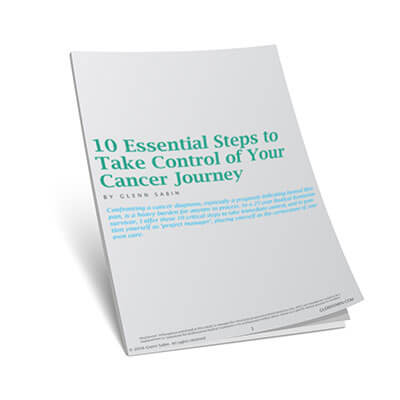Those familiar with my healing story know that I cleared my bone marrow of an incurable leukemia—chronic lymphocytic leukemia (CLL) in 2012, after 21 years of persistent disease. This was achieved without conventional therapy of any kind, now documented in the medical literture.
During those decades I overcame several challenges, and managed to maintain a good quality of life, learning lifelong coping skills along the journey. Today, a Harvard pathologist examining my marrow under a microscope cannot see active disease or evidence that I ever had an ‘incurable’ blood cancer. In medical-speak, this is called ‘no evidence of disease’ (NED) by phenotype or morphology.
So am I cured?
The oncology community considers a patient cured after no sign of disease for five years after achieving a complete remission. It’s an arbitrary number since several types of cancers can return after 5, 10 or even 20 years.
In my book n of 1, I refer to myself as ‘cured’ exactly zero times.
Healing Versus Curing
I don’t have much use for the term ‘cure’. To me it’s a meaningless descriptor, full of caveats.
Healing, however, is a responsible term with a progressive definition. I believe that some level of healing is possible for every cancer patient.
Currently there are over 14 million cancer survivors in the U.S. alone. Some are in remission and many live full lives with cancer as a treatable, manageable chronic disease. While active cancer treatment can be debilitating, with numerous harmful side effects, many patients at different stages of care and recovery can create an environment conducive to healing.
Healing Takes Many Forms
Many think of cancer healing as the recovery process from invasive interventions such as surgery, radiation or chemotherapy. It’s a common mindset of ‘I’ll endure the conventional treatment then heal from it’. While that’s certainly a true form of physical healing, there are numerous ways in which healing takes place.
The emotional, psychological and psychosocial features of healing should not be separated from the physical aspects. (click to tweet)
A 360 degree approach to cancer healing—one that comprehensively provides an environment in which true healing can occur—ought to be the overarching goal for those that provide and receive cancer care.
[See Glenn Sabin’s Anticancer Foods List]
Of the many paths to healing, quality of life with emphasis on positive relationships is crucial. Regular physical activity, tailored to a patient’s condition, ability and interest can greatly affect one’s ability to heal at all levels. Nutritious meals, sufficient hydration, stress-reducing exercise and activities, and restorative sleep, are essential combinations for healing mind, body and spirit.
With the help of their friends, families, and caregivers, patients can participate in healing activities that may include journaling, listening to music, nature walks, and regularly spending time with family and friends. Even interaction with pets can be powerfully therapeutic for those who are animal lovers.
Psycho-oncology, Stress Reduction and Living in the Present
Many cancer survivors will find solace working with psychotherapists and psychologists trained in oncology patient care. This can help patients gain and develop specific tools with which to deal with the uncertainty of a cancer diagnosis and the continuum of care along the journey into survivorship.
Notably, mind-body stress reduction therapies, under the guidance of a qualified practitioner, promote ‘living fully in the present’, where deep healing can occur.
Equally important is resolution within relationships. Addressing longstanding interpersonal issues can result in a healthier and more ‘settled’ mind; a tremendous healing benefit.
In summary, most qualitative lifestyle enhancing therapies, applied synergistically, can create a less toxic physical and emotional environment. Less toxicity equals a stronger base from which to deal with the challenge of underlying disease.
While not everyone can be cured, we can all, at some level, be healed.
Back to my story … so am I cured?
Modern science only identifies active disease once there are enough cancer cells to be picked up in a CT or PET scan, a blood test or, in my case, a bone marrow biopsy. However, cancer stem cells are immortal; they can divide forever.
I go about my life as if micro-metastatic disease still exists. But of emphasis: this is not a fatalistic approach. We all have cancer cells in our bodies—it’s the job of our immune system to kill cancer cells around the clock. I endeavor to keep my system perpetually supercharged by closely adhering to my integrative health regimen.
I do not live as if I’m cured. I behave as if I am healed.
Cure is an outmoded, useless word to describe disease-free survivors. This is why I do not use the ‘cure’ word when describing my personal course with an ‘incurable’ cancer and the remarkable outcomes I have achieved with only natural approaches. It is not because I am afraid to tempt fate; it is based upon my intimate experiences with and understanding of healing.
If I am deemed disease-free via advanced medical technology and the trained eyes of a Harvard pathologist a decade or two from now, I will still not use the word ‘cured’ to describe my outcome.
I experience healing every day. Restorative therapies are available to us all. It’s time to reframe our thoughts and focus our actions.
Join my private Facebook Group Anticancer Thrivers—a community forum for achieving your best life while living with cancer.


